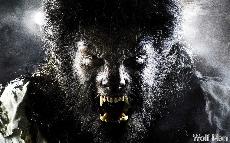A horse-drawn carriage plummets through the dark, dense forest of Blackmoor, England, under a brilliantly full, harvest moon, which lights the narrow road to the estate of Sir John Talbot. The carriage bears the heir to a terrible secret and death on its thundering hooves.
The opening scenes of “The Wolfman” instantly transports audiences into a beautifully surreal, Gothic English landscape. The set design is meticulous and the musical score truly haunting. The art direction and the cinematography are flawless and mesmerizing. Which leaves this as the best time to exit the theater.
Director Joe Johnston’s uninspired remake of the 1941 classic “Wolfman” boasts little more than modern effects and impeccable set design for which he is not responsible.
The story of the wolfman centers on a series of mysterious killings, which occurred in Blackmoor, England, around 1890 that gave rise to legends of a wild beast, which roamed the countryside killing townspeople indiscriminately.
This film’s major claim to fame will be that the wolf man’s howl will be the top-selling ringtone by the end of the week. Even so, the howl sounds as if it were sampled straight from the title song on Michael Jackson’s album “Thriller.”
Anthony Hopkins: Check. Benicio Del Toro: Check. Full bucket of popcorn: Check…two hours later, this film is still sitting on the tarmac.
Since the dawn of Computer Graphic Imaging (CGI) and with the complete absence of fresh ideas in Hollywood, audiences have been assailed with innumerable remakes of everything from the 1953 version of “War Of The Worlds” to any movie that had a monster, an enormous, fictitious city, a pterodactyl, a gigantic spider, a spaceship, an alien, a talking dog, etc., etc., ad nauseum. You get the idea.
Through the magic of computers, we can make practically anything look realistic these days; a man turning into a werewolf, for example. Unfortunately CGI cannot give actors believable British accents, rewrite scripts or cast a film properly. Not yet, anyway.
Surely Benicio Del Toro must have been compensated generously for the damage this movie will do to his reputation, having exposed him as completely incapable of affecting a British accent, or uttering anything more than monosyllabic grunts.
The definitely overpaid writers actually jammed a short scene into the lackluster script explaining why Del Toro is the only person in the entire film without an English accent. It seems his character was sent away to America as a child for a preposterous reason, so no one in the audience should think about it. (Just keep eating your popcorn; didn’t you see Kevin Costner in Robin Hood?).
Del Toro, although an acclaimed actor, was simply miscast in this film. Bad casting is the result of studios using big names to draw certain target audiences, forgetting that names make for a big opening weekend, but well made movies create word of mouth.
No doubt they will soon be making “Gone With The Wind” starring Zac Efron and Britney Spears and handing out loaded guns and cyanide capsules at the popcorn counter so we can all shoot ourselves in the face. with cyanide capsules.
A remake is made, ostensibly, in light of the fact that certain classic films can now be made with remarkable visual improvements and contemporary scripts that will appeal to a more jaded, violent and incredibly horny generation.
If a film can actually be improved upon then a re-make may be warranted, but let’s not forget that fifty years ago most movies made, particularly monster flicks, were not very sophisticated at all. Big studios were churning them out at a rate of a dozen a month. Improving one is not a tall order.
Ergo, if a director or a movie studio can’t improve upon the original, they should leave it alone. Case in point: the incredibly disappointing shot-for-shot remake of Hitchcock’s “Psycho” in 1998. When a director lacks the ingenuity to improve on the original they will often simply copy the original directors shot list and say that it’s done purposely “In homage to the original.”
The point is that many remakes are well planned and develop formerly simple characters into well-fleshed and interesting antagonists and inject familiar story lines with surprisingly complex plot twists and the result is engaging films. If you can’t improve on the whole package, please, let sleeping wolves lie.

